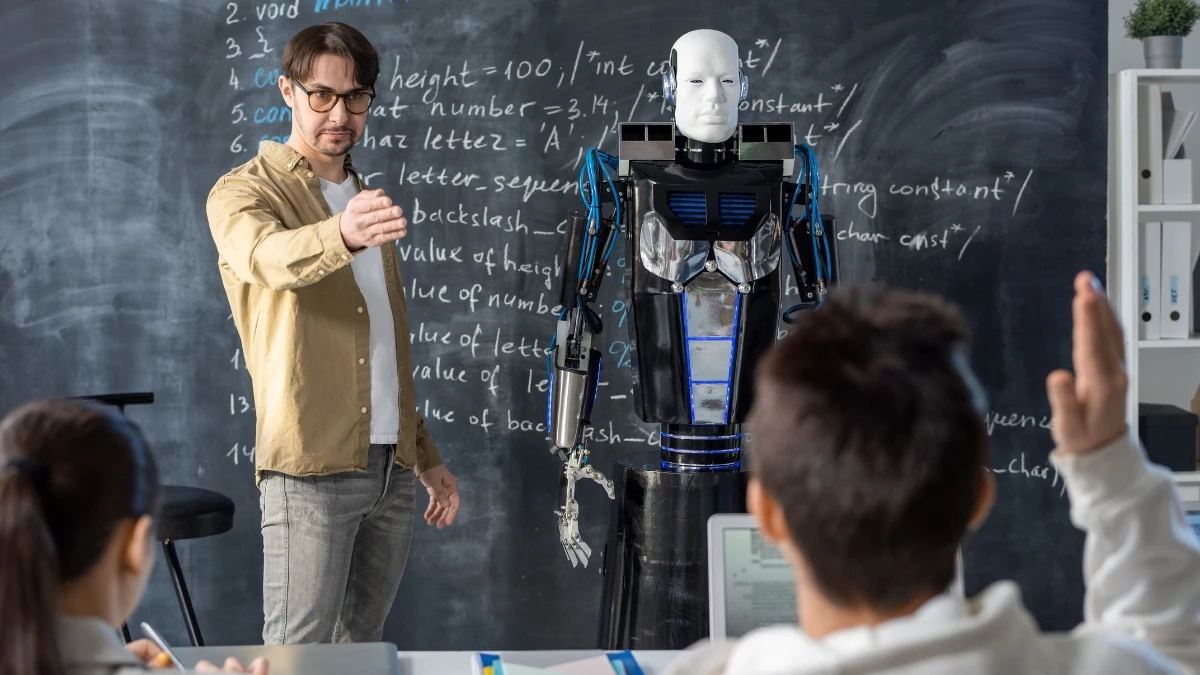Remember sitting through classes that felt like watching paint dry? Traditional education struggles to keep up with how each student learns.
Every day, teachers face packed classrooms where some students fall behind while others get bored.
But 2025 brings a game-changing solution: AI tutors like Khanmigo. These smart teaching assistants work alongside teachers to create custom learning paths for every student.
With doubled learning gains in physics and 10+ hours saved weekly on admin tasks, schools are seeing real results. Let’s look at how AI tutors are reshaping education while empowering, not replacing, teachers.
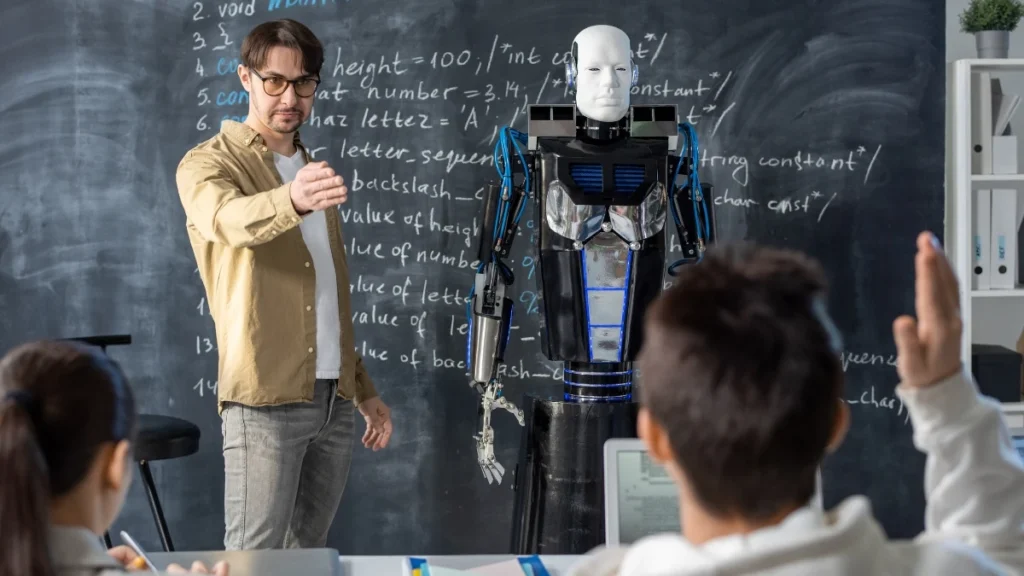
AI’s Role in Curriculum Personalization

Learning in 2025 has shifted from one-size-fits-all to personalized education paths. AI systems analyze each student’s progress, interests, and learning style, creating unique educational journeys.
Students now learn at their own pace, focusing on areas where they need more practice while moving quickly through concepts they grasp easily.
The technology works by collecting data about how students interact with their lessons. When a student struggles with algebra, the AI might present the concept using visual examples or break it into smaller, manageable steps.
Success patterns from millions of students help the system predict which approaches will work best for each learner.
A student who learns better through stories might see math problems wrapped in narratives, while another who prefers hands-on learning gets interactive simulations.
Real-world connections make lessons stick in students’ minds. AI finds ways to link course material to each student’s interests and daily life. Physics concepts come alive through sports examples for athletes, while music lovers see math in rhythm patterns.
These personal touches keep students engaged and help them see how their studies matter outside the classroom.
Teachers receive detailed reports about which approaches work best for their students, letting them refine their teaching methods and provide targeted support where needed.
What Is Khanmigo and Its Impact on AI Learning?
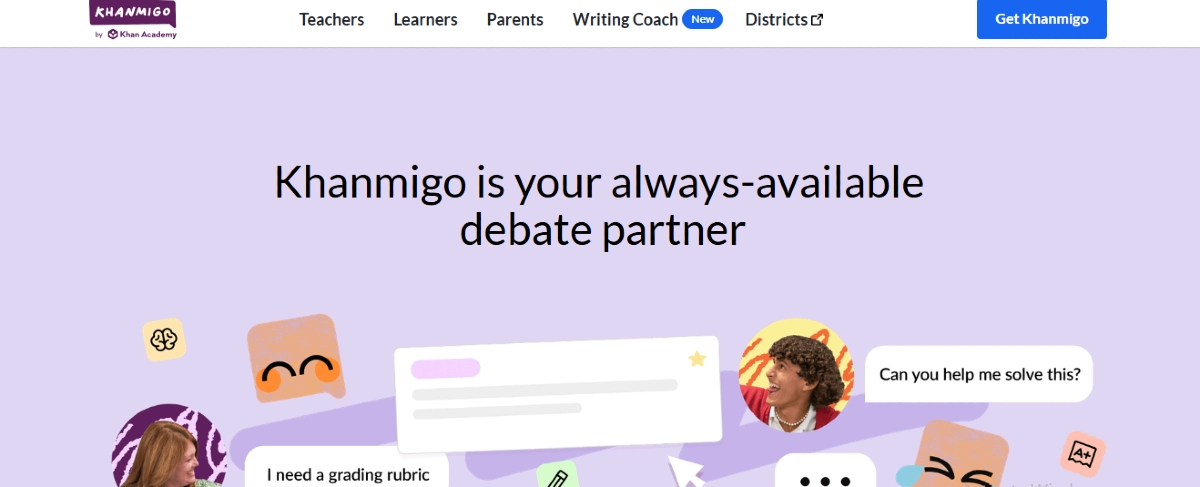
A new era of education arrived in 2025 with Khanmigo, an AI tutor that changes how students learn.
The system combines Khan Academy’s proven teaching methods with GPT-4’s advanced AI capabilities. Students in 266 U.S. school districts now learn through personalized paths that adapt to their needs.
Teachers report spending less time on routine tasks and more time connecting with students.
The AI handles grading, creates lesson plans, and spots learning gaps automatically. This gives teachers back 10 hours each week for meaningful student interactions.
Learning gains have doubled in subjects like physics where students often struggle.
The system costs $15 per year per student, making it accessible for many schools. More importantly, it helps teachers spot which students need extra support before they fall behind.
Integration with Learning Platforms
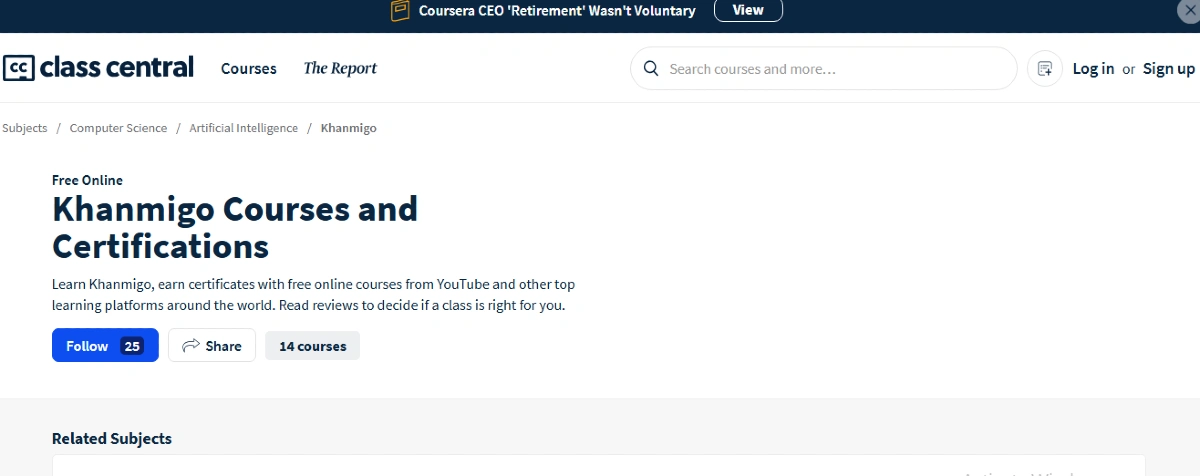
Modern education needs tools that work together smoothly. Khanmigo connects with popular platforms like Coursera, Class Central, and Google Classroom, letting students move between them without losing progress.
Teachers see all student data in one place, making it easier to track progress. The system shares information about what students know and where they need help.
This helps other platforms suggest the right content at the right time. A student who masters algebra in Khanmigo might see related physics courses on Coursera.
AI guides help students find their way through different learning resources. The system suggests videos, practice problems, or online courses based on each student’s goals and progress. This creates a complete learning experience that uses the best of each platform.
Human vs. AI Teaching Effectiveness
The debate about AI versus human teaching reveals a complex relationship rather than a competition. Both bring unique strengths to education, with data showing the best results come from combining AI efficiency with human insight.
1. Data-Driven Instruction

Traditional classroom assessment takes weeks to spot learning gaps. AI changes this by analyzing student work in real-time.
Every click, answer, and interaction builds a detailed picture of student understanding. Teachers receive instant insights about which concepts need more explanation.
The system watches how long students spend on problems and tracks their success rates. When many students struggle with the same concept, teachers know to revisit that topic.
Machine learning algorithms find patterns in student mistakes, helping teachers address common misconceptions before they become habits.
These analytics help teachers plan more effective lessons. They see which examples resonated with students and which teaching methods led to better understanding.
This data helps teachers make smart choices about homework assignments, group projects, and test preparation.
2. Student Engagement Methods

Modern students need learning experiences that hold their attention. AI tutors use conversations, games, and interactive exercises to keep students involved.
The system asks thought-provoking questions that guide students toward understanding rather than just memorizing facts.
Quick feedback makes a big difference in student motivation. Instead of waiting for graded papers, students know immediately what they did right and where they went wrong.
This instant response helps them learn from mistakes while the material is fresh in their minds.
Learning style matters. Some students grasp concepts through visuals, others through hands-on practice.
AI tracks which methods work best for each student and adjusts accordingly. This personalization keeps students interested and helps them learn more effectively.
3. Learning Support Systems

Students learn at all hours, but teachers can’t be available 24/7. AI fills this gap by providing consistent support whenever students need help.
Late-night homework questions get immediate answers, and early morning review sessions happen on demand.
The quality of help stays high no matter how many students ask for assistance. Each learner receives carefully crafted explanations and examples.
This reliable support builds student confidence and encourages them to seek help when needed.
Every interaction teaches the AI to teach better. The system learns from student responses, refining its explanations and adding new examples.
Popular explanations get used more often, while less helpful ones get improved or replaced.
4. Teacher Time Management

Paperwork used to consume teachers’ evenings and weekends. AI now handles many routine tasks automatically.
Grading multiple-choice tests, checking homework, and creating basic lesson plans happen with a few clicks.
Teachers spend more time doing what they do best: connecting with students. Instead of grading papers, they can plan engaging activities and give students individual attention.
The AI handles data entry and progress reports, freeing teachers to focus on teaching. Class preparation becomes more efficient with AI support.
The system suggests relevant examples, creates practice problems, and adapts assignments to student needs. Teachers can modify these suggestions rather than starting from scratch.
RELATED:
5. Emotional Intelligence Gap

Technology can’t replicate human empathy and emotional connection. Teachers notice subtle signs of student stress or confusion that AI might miss.
A slight change in behavior or tone tells teachers when students need emotional support or a different approach to learning.
Building trust and rapport happens through small daily interactions. Teachers share stories, crack jokes, and show they care about students’ lives beyond academics.
These personal connections motivate students to try harder and ask for help when needed.
Students learn social skills by watching how teachers handle conflicts and celebrate successes.
They pick up on body language, tone of voice, and emotional cues that AI can’t model. These human interactions prepare students for real-world relationships and collaboration.
6. Hybrid Teaching Models

Successful schools blend AI efficiency with human wisdom. Teachers use AI to handle routine tasks while focusing on mentoring and motivation.
The technology supports teachers rather than replacing them, creating a better learning environment for students.
AI handles data analysis and basic instruction, letting teachers spend time on complex problem-solving and creativity.
Students get the best of both worlds: consistent AI support for foundational skills and human guidance for advanced thinking.
Class time becomes more productive as AI takes care of practice and review. Teachers lead discussions, oversee group projects, and help students apply knowledge to real-world problems.
This partnership between AI and teachers creates engaging, effective learning experiences.
RELATED:
7. Future Skills Development

Modern education must prepare students for jobs that don’t exist yet. AI helps teach core skills like critical thinking and problem-solving through adaptive challenges.
Students learn to analyze information, spot patterns, and find creative solutions.
Project-based learning becomes more sophisticated with AI support. Students tackle real-world problems while the system tracks their progress and suggests resources.
Teachers guide these projects, helping students develop teamwork and communication skills. Technology encourages experimentation and risk-taking in learning.
Students try different approaches without fear of failure, as AI provides immediate feedback and guidance. This builds confidence and resilience, essential skills for future success.
RELATED:
8. Professional Development Impact

Teachers need new skills to work effectively with AI tools. Professional training now includes technology integration and data analysis.
Teachers learn to interpret AI insights and use them to improve their teaching methods.
The role of educators evolves as AI handles routine tasks. Teachers become learning coaches, helping students develop critical thinking and creativity.
They learn to use technology to enhance their teaching while maintaining meaningful human connections.
School systems invest in ongoing teacher education. Regular workshops help teachers stay current with AI advances and teaching methods.
This continuous learning ensures teachers can make the best use of technology while maintaining their essential role in education.
Equity Issues in Access to AI Education Tools
While AI promises to transform education, not all students have equal access to these tools. Schools across different communities face varying challenges in implementing AI tutoring systems, creating new gaps in educational opportunities.
1. Digital Divide Challenges
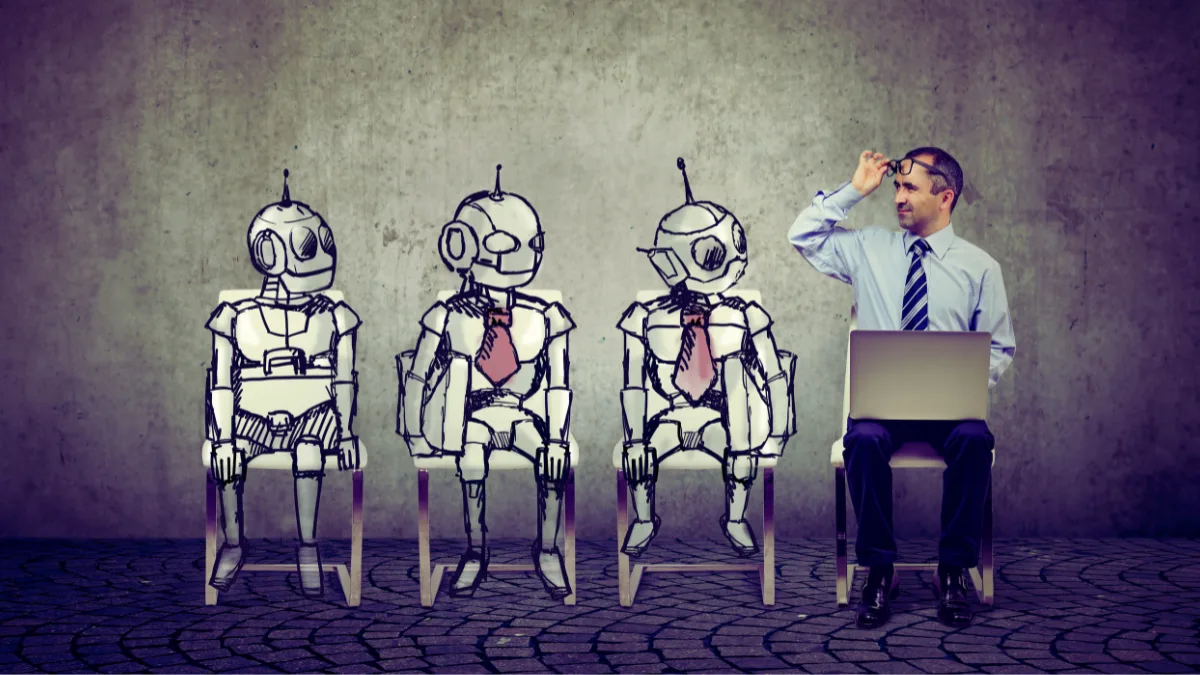
Rural areas often lack reliable internet connections needed for AI learning platforms. Many students can’t access online resources from home, limiting their ability to use tools like Khanmigo for homework or extra practice.
Some families share one computer among several children, making it hard to complete AI-guided assignments.
Internet speed creates another barrier to learning. AI tutors need stable connections to work properly, but many areas have slow or unreliable service.
Students might wait minutes for responses that should come in seconds, making the learning experience frustrating and less effective.
Device quality affects how well students can use AI tools. Old computers might not run newer programs smoothly, while small phone screens make it hard to read complex materials.
These technical limitations mean some students can’t fully benefit from AI tutoring, even when it’s available.
2. Economic Barriers

School budgets vary widely between districts, affecting their ability to adopt new technology. While Khanmigo costs $15 per student yearly, many schools struggle to fund basic supplies.
The total cost includes not just software, but also computers, internet infrastructure, and technical support.
Training teachers to use AI tools adds another expense. Schools need to pay for professional development and often hire IT staff.
Some districts can’t afford to upgrade their internet connections or buy new computers, making AI adoption impossible.
Maintenance costs create ongoing financial pressure. Computers break, software needs updates, and technical problems require expert help.
Poor districts often can’t sustain these expenses, leading them to abandon AI programs or never start them.
3. Implementation Obstacles

Teachers need extensive training to use AI tools effectively. Many feel overwhelmed by new technology, especially when they lack proper support.
Schools struggle to find time and resources for training while maintaining regular classes.
Technical problems discourage both teachers and students. When systems crash or run slowly, valuable class time gets wasted.
Schools without IT staff often can’t fix problems quickly, leading to interrupted learning and frustrated users.
Language barriers complicate AI adoption in diverse communities. While Khanmigo supports multiple languages, the quality of non-English content often lags.
Students learning English might struggle with AI instructions, limiting their ability to benefit from these tools.
Tired of 9-5 Grind? This Program Could Be Turning Point For Your Financial FREEDOM.

This AI side hustle is specially curated for part-time hustlers and full-time entrepreneurs – you literally need PINTEREST + Canva + ChatGPT to make an extra $5K to $10K monthly with 4-6 hours of weekly work. It’s the most powerful system that’s working right now. This program comes with 3-months of 1:1 Support so there is almost 0.034% chances of failure! START YOUR JOURNEY NOW!
